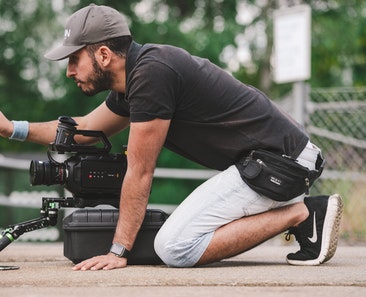Viktor Hovland's double-pump swing, explained
It’s been almost a week since Viktor Hovland pulled out his double-pump move during the final round of the Sentry at Kapalua last weekend, and I still can’t wrap my brain around it. In case you missed it, on Sunday, Hovland was seen hitting a drive where he seemed to bounce his hands twice at the top of his backswing.
A return of the double-pump for Viktor Hovland. https://t.co/4Tyexz5LQj pic.twitter.com/FrDiLwNCiy
— PGA TOUR (@PGATOUR) January 4, 2025
We’ve seen the move from Hovland in the past, but the mechanics of the latest appearance have been living rent-free in my head. Why is Hovland able to seemingly generate more power and control, two things that aren’t usually associated with each other, using a simple bounce of his hands?
I asked Rick Silva, a GOLF Teacher to Watch and golf biomechanics expert, to better understand the science behind Hovland’s double pump.
As Hovland explains, he uses the double pump to produce a right-to-left ball flight and additional distance. Silva says this move works for Hovland because it improves his sequencing, as his fade is likely a result of his arms initiating the downswing too early.
Why does sequencing matter?
Think about it like this, if you were a figure skater trying to spin as fast as possible, you’d pull your arms in, or over your head, and if you were trying to slow down or minimize rotation, you’d expand as much as possible. Now, apply this concept to the golf swing.
Engaging the arms from the highest hand position, or early in the sequence, increases rotation and speed. This opens the body, causes the club to drag, forces players to throw the club away from their body (otherwise known as coming over the top) and results in an out-to-in swing path.
The double pump helps Hovland trigger his arms a few seconds later, slowing them down and restricting his rotation. This move also creates more distance between his torso and the golf club, which Siva explains is key to transferring more energy into the club and generating more distance off the tee.
“The largest mass we have as a human being is our rib cage or torso,” Silva says, “And how we’re balancing that relative to the mass of the club is important.”
In Hovland’s case, he builds up tension by maintaining the maximum distance between his torso and the golf club. Then, he releases his arms, slinging them off his torso mass in a motion that’s similar to snapping a towel.
“When the golf club is as far away from the torso as possible, it’s actually restricting rotation and transferring more energy to the club,” Silva says.
The takeaway
While the double pump works for Hovland, it’s not something Silva says the average golfer should strive to copy — but we can still take something away from this lesson. Sequencing is integral to your swing. Look at Hovland. A simple tweak allowed him to increase control and pick up almost 20 yards with his drive. Instead of focusing on small details in your swing, perhaps your time would be better spent perfecting your swing sequence.
The post Viktor Hovland’s double-pump swing, explained appeared first on Golf.



